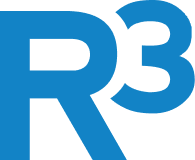The shift to remote work has transformed the way organizations operate, posing unique challenges and opportunities, particularly for IT departments and leadership. As the backbone of any company’s remote workforce, IT teams play a crucial role in ensuring that operations run smoothly, securely, and efficiently. This blog post delves into key aspects of remote workforce management from the IT perspective, including cybersecurity best practices, device management, onboarding and offboarding processes, technology evaluation, and essential considerations for IT leaders.
Cybersecurity Best Practices
In a remote work environment, cybersecurity is paramount. IT departments must implement robust security measures to protect sensitive company data and personal information. Here are some best practices:
- Virtual Private Networks (VPNs): VPNs are essential for secure remote connections, encrypting data transmitted between remote employees and company servers.
- Multi-Factor Authentication (MFA): Implementing MFA adds an additional layer of security by requiring a second form of verification from users, significantly reducing the risk of unauthorized access.
- Regular Security Audits and Updates: Conduct frequent security audits to identify vulnerabilities and ensure that all software and systems are up-to-date with the latest security patches.
- Employee Training: Educate employees about cybersecurity threats such as phishing attacks and teach them how to recognize and respond to potential threats.
Device Management
Effective device management is critical for maintaining both security and productivity in a remote work setting. IT departments should adopt strategies, such as:
- Centralized Device Management Systems: Utilize systems that allow for remote monitoring, management, and updating of devices to ensure compliance with corporate security policies.
- Standardization of Equipment: Provide employees with standardized devices to streamline support and troubleshooting, while also ensuring that all security measures are uniformly applied.
- Endpoint Security Solutions: Implement comprehensive endpoint security solutions that include antivirus, anti-malware, and firewall protections to safeguard devices from threats.
Onboarding and Offboarding
The onboarding and offboarding processes are critical junctures where security and efficiency must be prioritized:
- Seamless Onboarding: Develop a structured onboarding process that quickly equips new employees with the necessary tools, access to systems, and security training. This helps to minimize downtime and potential security risks.
- Secure Offboarding: Ensure that offboarding procedures are thorough, including the revocation of access to company systems and retrieval or secure wiping of company-owned devices to prevent data leaks.
Technology Evaluation
Evaluating and implementing new technologies is a continuous process that requires careful consideration. Key aspects include:
- Scalability: Choose solutions that can grow with the company and accommodate an increasing number of remote users without compromising performance or security.
- User-Friendliness: Opt for technologies that are intuitive and require minimal training, reducing the burden on IT support and increasing employee productivity.
- Integration Capabilities: Ensure that new technologies can seamlessly integrate with existing systems to avoid disruptions and maintain operational continuity.
Key Considerations for IT Leaders
IT leaders must balance innovation with security and operational efficiency. Here are some essential considerations:
- Forward-Thinking Leadership: Stay informed about emerging technologies and trends to proactively address potential challenges and seize opportunities.
- Fostering a Culture of Security: Promote a security-first mindset across all departments to ensure that everyone contributes to protecting company data.
- Continuous Evaluation and Feedback: Regularly assess the effectiveness of current IT strategies and seek feedback from employees to identify areas for improvement.
In conclusion, managing a remote workforce demands a strategic approach from IT departments and leaders. By prioritizing cybersecurity, effective device management, seamless onboarding and offboarding, thorough technology evaluation, and strategic leadership, organizations can create a secure and efficient remote work environment that supports both business objectives and employee satisfaction.

